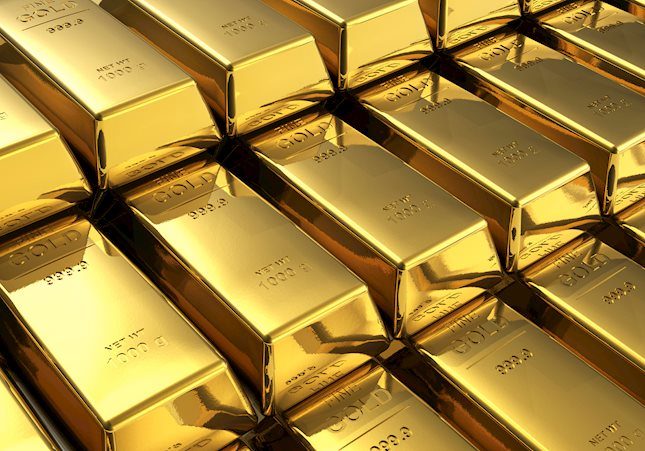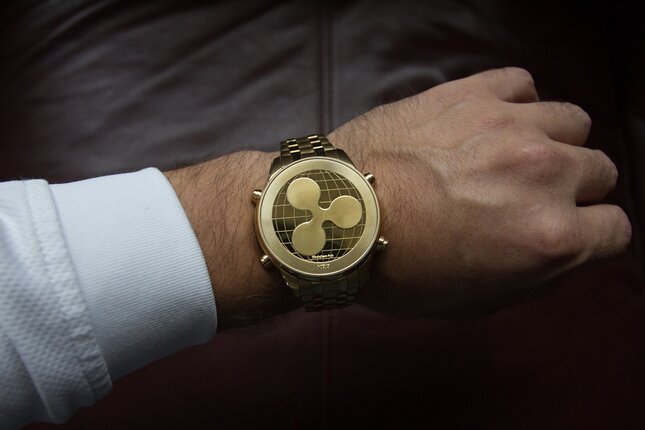Most recent article: Mexican Peso treads water as the US Dollar counterattacks
- Mexican Peso advance is capped by the Greenback as the economy in the United States (US) remains solid.
- Mexico's economic outlook is adjusted by the Bank of Mexico (Banxico), with growth projections for 2023 and 2024 revised upwards.
- Banxico anticipates inflation to be at 4.4% in Q4 2023 and 3.4% in 2024, aiming to achieve a 3% inflation target.
- The OECD predicts a slowdown in Mexico’s economy, largely due to a cooling US economy impacting Mexican exports.
Mexican Peso (MXN) plunges against the US Dollar (USD) in a late trading session on Wednesday after the US Department of Commerce revealed the economy in the United States (US) is growing above trend, which could warrant further action by the US Federal Reserve’s (Fed). Consequently, the USD/MXN bounces off its daily lows and trades near the week's highs at 17.28, up 0.79% daily.
Mexico’s economic docket witnessed the release of the Bank of Mexico (Banxico) economic forecasts for 2023 and 204. In its quarterly report, Banxico revised the economic growth upward from 3% to 3.3% for 2023 and projects the economy will pick up from 2.1% to 3% in 2024. Regarding inflation prospects, the Mexican central bank foresees inflation at 4.4% in Q4 2023, while for 2024, it is estimated at 3.4%. The central bank forecasts headline and core inflation to hit the 3% target imposed by the institution.
Across the border, the US economy grew faster than expected, the US Bureau of Economic Analysis (BEA) reported, sponsoring a leg-up in the US Dollar Index (DXY), which tracks the performance of the Greenback versus six currencies. The DXY climbs 0.23%, up at 102.95, a headwind for the USD/MXN.
Recently, US Federal Reserve officials had crossed newswires. Atlanta’s Fed President Raphael Bostic said he sees slower growth and falling inflation pressures in the current monetary policy stance. At the same time, Richmond’s Fed President Thomas Barkin commented he is “skeptical” that inflation is on its way to the Fed’s goal, while keeping the option of higher interest rates.
Daily digest movers: Mexican Peso weakens as the USD/MXN rises toward 17.28
- The Organization for Economic Co-operation and Development (OECD) released the 2024 economic outlook for Mexico, in which the economy is expected to expand at a slower pace of 2.5%, down from a 3.4% growth rate registered in 2023.
- The report cites the moderation of the US economy, which would likely dampen Mexico’s exports. The OECD suggests the Bank of Mexico (Banxico) monetary policy must remain restrictive, as inflation is estimated to dip to 3.9% and 3.2% in 2024 and 2025, respectively.
- The US Gross Domestic Product (GDP) for Q3 rose by 5.2% QoQ, exceeding estimates of 5%.
- The US Advancement Goods Trade Balance registered a deficit of $89.8 billion in October, widening $3.5 billion from the $86.3 deficit in September.
- On Tuesday, Fed Governor Christopher Waller, a former hawk, commented that there are good economic arguments that rates could be lowered if inflation continues falling for several months.
- A day after Fed Waller's comments showed interest rates, traders expect 115 basis points of rate cuts by the US central bank in 2024.
- On November 27, Banxico’s Deputy Governor, Jonathan Heath, commented that core prices must come down more, adding that one or two rate cuts may come next year, but “very gradually” and “with great caution.”
- On November 24, a report revealed the economy in Mexico grew as expected in the third quarter on an annual and quarterly basis, suggesting the Bank of Mexico would likely stick to its hawkish stance, even though it opened the door for some easing.
- Mexico's annual inflation increased from 4.31% to 4.32%, while core continued to ease from 5.33% to 5.31%, according to data on November 23.
- The financial markets' narrative that the US Federal Reserve (Fed) is done hiking rates has kept the Greenback on the backfoot, but today, it has found some relief.
- Data published earlier this month showed prices paid by consumers and producers in the US dipped, increasing investors' speculations that the Fed’s tightening cycle has ended.
- A Citibanamex poll suggests that 25 of 32 economists expect Banxico's first rate cut in the first half of 2024.
- The poll shows “a great dispersion” for interest rates next year, between 8.0% and 10.25%, revealed Citibanamex.
- The same survey revealed that economists foresee headline annual inflation at 4.00% and core at 4.06%, both readings for the next year, while the USD/MXN exchange rate is seen at 19.00, up from 18.95, toward the end of 2024
Technical Analysis: Mexican Peso loses strength though the USD/MXN bias remains bearish below the 200-day SMA
Even though the USD/MXN reached a new week high of 17.22, buyers barely cling to minuscule gains. The 20-day Simple Moving Average (SMA) is about to cross below the 100-day SMA, both at around 17.34, signaling the downtrend is gaining steam. If the pair drops below 17.05, the next support would be the 17.00 figure, ahead of challenging the year-to-date (YTD) low of 16.62.
Conversely, if buyers achieve a daily close above the November 21 high at 17.26, that would put into play a test of the confluence of the 20 and 100-day SMAs at 17.34. Further upside is seen at the 200-day SMA at 17.58.
Interest rates FAQs
What are interest rates?
Interest rates are charged by financial institutions on loans to borrowers and are paid as interest to savers and depositors. They are influenced by base lending rates, which are set by central banks in response to changes in the economy. Central banks normally have a mandate to ensure price stability, which in most cases means targeting a core inflation rate of around 2%.
If inflation falls below target the central bank may cut base lending rates, with a view to stimulating lending and boosting the economy. If inflation rises substantially above 2% it normally results in the central bank raising base lending rates in an attempt to lower inflation.
How do interest rates impact currencies?
Higher interest rates generally help strengthen a country’s currency as they make it a more attractive place for global investors to park their money.
How do interest rates influence the price of Gold?
Higher interest rates overall weigh on the price of Gold because they increase the opportunity cost of holding Gold instead of investing in an interest-bearing asset or placing cash in the bank.
If interest rates are high that usually pushes up the price of the US Dollar (USD), and since Gold is priced in Dollars, this has the effect of lowering the price of Gold.
What is the Fed Funds rate?
The Fed funds rate is the overnight rate at which US banks lend to each other. It is the oft-quoted headline rate set by the Federal Reserve at its FOMC meetings. It is set as a range, for example 4.75%-5.00%, though the upper limit (in that case 5.00%) is the quoted figure.
Market expectations for future Fed funds rate are tracked by the CME FedWatch tool, which shapes how many financial markets behave in anticipation of future Federal Reserve monetary policy decisions.
Information on these pages contains forward-looking statements that involve risks and uncertainties. Markets and instruments profiled on this page are for informational purposes only and should not in any way come across as a recommendation to buy or sell in these assets. You should do your own thorough research before making any investment decisions. FXStreet does not in any way guarantee that this information is free from mistakes, errors, or material misstatements. It also does not guarantee that this information is of a timely nature. Investing in Open Markets involves a great deal of risk, including the loss of all or a portion of your investment, as well as emotional distress. All risks, losses and costs associated with investing, including total loss of principal, are your responsibility. The views and opinions expressed in this article are those of the authors and do not necessarily reflect the official policy or position of FXStreet nor its advertisers. The author will not be held responsible for information that is found at the end of links posted on this page.
If not otherwise explicitly mentioned in the body of the article, at the time of writing, the author has no position in any stock mentioned in this article and no business relationship with any company mentioned. The author has not received compensation for writing this article, other than from FXStreet.
FXStreet and the author do not provide personalized recommendations. The author makes no representations as to the accuracy, completeness, or suitability of this information. FXStreet and the author will not be liable for any errors, omissions or any losses, injuries or damages arising from this information and its display or use. Errors and omissions excepted.
The author and FXStreet are not registered investment advisors and nothing in this article is intended to be investment advice.
Recommended content
Editors’ Picks

EUR/USD clings to strong daily gains near 1.0400
EUR/USD remains on track to post strong gains despite retreating from the session high it set above 1.0430. The positive shift in risk mood, as reflected by the bullish action seen in Wall Street, forces the US Dollar to stay on the back foot and helps the pair hold its ground.

GBP/USD extends into a two-day win streak as Pound recovers
GBP/USD extended into its second day of gains in a row, kicking off the new trading week gaining seven-tenths of one percent and dragging bids back above the 1.2500 handle after last week’s bearish plunge below 1.2400.

Gold price holds firm despite higher US Treasury yields
Gold prices remained flat at the beginning of the week even though the Greenback is getting battered. Higher United States Treasury bond yields kept the non-yielding metal pressured while US President-elect Donald Trump grabbed the headlines amid confusion on his tariff plans.

Ripple's XRP eyes massive rally following spike in key on-chain metric
Ripple's XRP trades near $2.40, up 1% on Monday following a 40% surge in its futures open interest. The surge could help the remittance-based token overcome the key resistance of a bullish pennant pattern.

Five fundamentals for the week: Nonfarm Payrolls to keep traders on edge in first full week of 2025 Premium
Did the US economy enjoy a strong finish to 2024? That is the question in the first full week of trading in 2025. The all-important NFP stand out, but a look at the Federal Reserve and the Chinese economy is also of interest.

Best Forex Brokers with Low Spreads
VERIFIED Low spreads are crucial for reducing trading costs. Explore top Forex brokers offering competitive spreads and high leverage. Compare options for EUR/USD, GBP/USD, USD/JPY, and Gold.